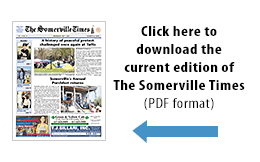(The opinions and views expressed in the commentaries and letters to the Editor of The Somerville Times belong solely to the authors and do not reflect the views or opinions of The Somerville Times, its staff or publishers.)

By Joseph A. Curtatone
Taking a closer look at notable city data – and interesting numbers.
Almost 30 years: Last week the City Council voted to adopt a new zoning ordinance, which is the first major overhaul of the zoning rules since 1990 and it replaced some regulations that had been in place since 1924 when the City first adopted zoning. A lot has changed over the past 30 years, and the zoning code was amended over the years to reflect that. Over the years those one-off changes made for a zoning code that was overly complicated and often made it difficult to do even simple home upgrades. Although the new code comes in at 552 pages, it’s simplified the rules and will make it easier to understand what can and cannot be built in Somerville. It also updates the rules for Somerville’s future. For example, the new code created a Fabrication District for arts and creative enterprises, which will make it easier for artists and makers to open studios and shops.
7 years, 9 months, 29 days, 13 hours, and 4 minutes: From his first day on the job until the zoning overhaul was voted on, the City’s Senior Planner Dan Bartman set a timer and then spent nearly eight years working on the new regulations. It was finally adopted 7 years, 9 months, 29 days, 13 hours, and 4 minutes after he started on it. While Dan was the driving force behind the zoning overhaul since he was hired in 2012, he is one of many City staff members and residents who contributed to it. The new zoning code went through a rigorous revision process that incorporated community feedback and best practices. We wanted to make sure we ended up with rules that will carry us far into the future and help us reach our community-created SomerVision goals.
21 building types: Somerville’s new zoning is a “form-based code,” which means it’s organized by the types of buildings, not their uses. There are 21 building types in the new rules, which are based on criteria like the building’s dimensions. Types of buildings in the code include cottages, triple deckers, lab buildings, and fabrication buildings. Along with building types, the code also includes 15 building components – things like awnings, decks, and dormers – that might be part of a building or a later addition. A form-based code gives property owners predictability when it comes to constructing a new building or renovating an existing one – find your zone and building type, review one chapter to see what’s possible.
4 kinds of urban agriculture: Over the past few years, more and more residents have shown an interest in urban agriculture, so in 2012 we wrote guidelines that would allow for it. Now our new zoning includes rules for four types of urban agriculture – apiculture (beekeeping), aviculture (raising birds), commercial farming, and residential gardening. This is an example of why it was important to update our zoning code – back in 1990 there wasn’t as much interest from residents in growing their own food or raising birds and bees.
12 feet: In the future you’ll be seeing wider sidewalks in Somerville. One of our new zoning rules sets the requirement that any new sidewalks must be at least 12 feet wide on main streets and in squares. On existing streets, when a building is torn down the new building will have to be set far enough back to widen the sidewalk to 12 feet. Along with being a set of rules, the zoning code is also reflective of our values as a community. Wider sidewalks will provide greater accessibility to residents using mobility aides and generally make it easier and safer to be a pedestrian in the city.
Hundreds of graphics: The zoning code that was replaced had fewer than 20 illustrations. It tried to explain building dimensions by narrative, but even for experienced planners it was difficult to understand. The new code has hundreds of graphics to try and make it the most reader-friendly zoning code.
Data-based decision making is at the core of how the City of Somerville develops policy and sets priorities. Every day we check the latest 311 stats, and throughout the week we meet for in-depth review of departmental data and city trends. The Data Download column shares some of the data we’ve been reviewing recently, as well as interesting updates. To see more Somerville Data, visit the online Somerville Data Farm at www.somervillema.gov/datafarm.












Reader Comments